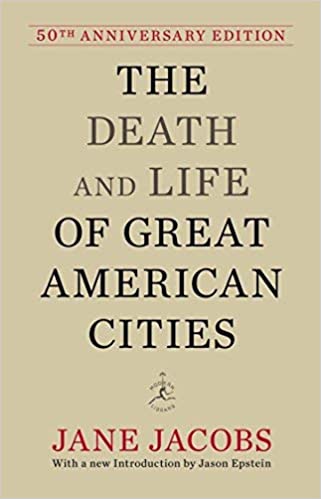Jane Jacobs was the definitive “grassroots” activist and one of the first to rail against Urban Renewal projects which tore down whole city blocks. In the face of Urban Renewal, in 1961, the architectural writer dared to question the wisdom of the male dominated city planning professionals. She wrote The Death and Life of Great American Cities. In it she warned that urban neighborhoods were becoming threadbare as the next generation moved into the suburbs. She recognized that city sidewalks buzzing with shopkeepers and customers, stay-at-home moms, children, and grandparents, postal workers, police, and the meter reader and walkers stitched themselves into a small place and how those connections formed a many colored urban quilt. She asked if removing dilapidated buildings and replacing them with high rise public housing was too simple a solution for a complex problem. In 458 pages, Jacobs’ now classic on city planning peels back layers of complexity to expose the value of diversity in the population and argued for relaxing zoning laws in the city. Jacobs starts with the sidewalks and builds her case from the ground up. Think of how popular sidewalk cafes have become in the past few years. She makes a convincing case for mixed use zoning. Ironically, in the new millennium, the first step toward revitalization is to build residential second-floor living over ground-floor businesses. She changed the assumption that old buildings should be torn down. One common example is that cities offer low rent (or no rent ) abandoned buildings to artists because they invariably bring new vitality to a dead space. Coffee houses, bookstores, and specialty shops spring up in the surrounding area; thus, increasing the tax base. One thing Jacobs didn’t foresee, however, is the impact of technology on our lives. Even though in the past two decades, the Internet has replaced the library, Amazon has replaced specialty bookstores, and food trucks have replaced cafes, people still seek community. Twenty-somethings flock to cafes with the fastest WiFi connection for work and community. Anyone interested in city planning and architecture should read this book to learn about the unintended consequences of Urban Renewal. It’ a classic cautionary tale of urban planning.
